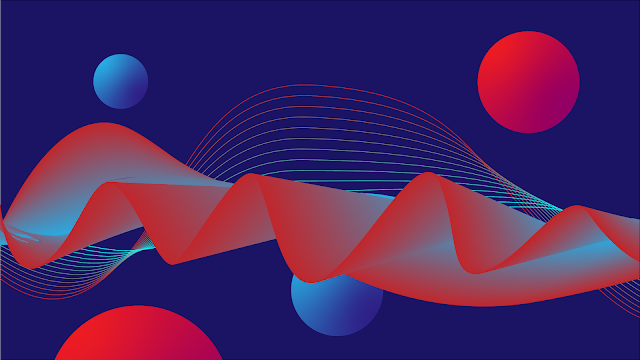The Elements of Art Are Always Present
- Line
- Shape
- Form
- Space
- Color
- Value
- Texture
You might have a different list you like to discuss, but these seven elements can be used to describe basically everything a work of art is doing. They are always present in visual arts, and I would say even in other, non-visual art forms too, though you may have to reinterpret the terms to notice. For instance, in music, patterns of sound and silence serve a similar function to space in visual art. Tempo or even pitch might be analogous to line, and so on. But that's a topic for another time.
For some reason, I hear and read people talking about these elements as if they were a toolbox to choose from, rather than the inescapable, atomic substance of a work (I recently read an article about these elements that was just the worst, and it's a common misunderstanding students have). Someone might see a shapeless abstract painting and say it doesn't use the principle of line, simply because they perceive no obvious literal lines in the painting. Or perhaps a 2D graphic design with no attempt at shading doesn't use form because it has no realistic depth. And yet, the choice not to include clear lines is a use of line. Not to mention the edges of the painting, which must exist somewhere. The 2D graphic design uses form, it simply chooses a flat form. When a pool is empty, we could say it has a depth of zero, but that is still a description of its depth.
Speaking of depth, and this may be more understandable to some people, I see the same thing with depth of field in photography all the time. People will see a photo with an extremely blurry background and a very narrow focus and comment on the great depth of field. But they will see a photo with everything in focus and say it has no depth of field. From a technical perspective, this isn't just off, it's the opposite of what's happening. The picture with everything in focus has much greater depth of field than the first photo—that's why everything is in focus. That's literally what the term means. The one with the narrow focus has very little depth. But the point is that depth of field is a property that all photos have, regardless of the degree to which they have it.
It's the same way length is a property of all pieces of string, even though some of them have a lot and some have a little. If there's no length, there's no string. If there's no DoF, there's no photo. And if any of the aforementioned elements of art are not present, then neither is the art itself. A black and white drawing uses color by leaving it out. A smooth surface has just as much texture as a rough one. A painting of a solid color uses space by filling all of it. An unrecognizable mass has a shape, even if we refer to it as shapeless because it's not a pre-defined one.
These things are elemental. They are structural. They are not always used intentionally. They aren't alway a focus of any given work, and it's not always important or helpful to discuss each one of them, but they are always there. They are a part of what you see. They are what you see.


Comments